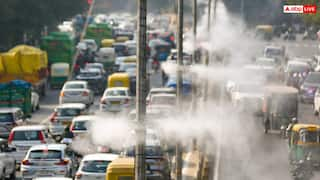Explorer
Reterritorialization And Neo-Liberalization: “Opening Up” Kashmir
Will Kashmir now be flooded by non-Kashmiris, as many are stating and some are hoping, and should we now expect real “development” as the Home Minister has promised?

Kashmiri youth react while listening during a gathering to celebrate Eid al-Adha in New Delhi on August 12, 2019. (PIC/AFP)
Even as much of the country has erupted with joy at the BJP’s audacious steps in abolishing the state of Jammu & Kashmir, creating two new Union Territories—little more than “Bantustans”, say some—and thereby, as is assumed to be the case, “integrating” the Kashmir Valley into the Union of India, some serious questions have arisen about the possible consequences of these changes. Article 35(A), which was added to the Constitution through a Presidential Order on 14 May 1954, conferred on the legislature of Jammu & Kashmir the power to define “permanent residents” and the rights that accrued solely to them, among them the privilege of being able to buy land and property in Kashmir. This provision has now been scrapped.
Will Kashmir now be flooded by non-Kashmiris, as many are stating and some are hoping, and should we now expect real “development” as the Home Minister has promised? Let us, for the moment, ignore the fact that, in comparison with most other Indian states, Kashmir already fares better on development indices, whether one considers infant or maternal mortality rates, under five mortality, levels of malnutrition, or the extent to which children have been immunized against common diseases. The painful truth is that almost no state in India can be described as truly “developed” in the conventional sense of the term; and some states—Uttar Pradesh, Rajasthan, Jharkhand, Chhattisgarh, Bihar, to name a few—lag well behind the preponderant number of the world’s countries, and can only be compared to countries such as the Congo, Burundi, Niger, and the Central African Republic. Will development for Kashmir mean direct investment in infrastructure, the creation of manufacturing jobs, and the growth of education, or will it also mean, which is absolutely certain, the purchase of properties in Kashmir as holiday homes by the rich of Delhi and Mumbai and unchecked environmental degradation?
There is an expression which for 200 years has guided colonial enterprises. Africa was described by rapacious European explorers as finally having entered into the pages of history when the continent was “opened up” to European exploration, trade, and ruthless exploitation. The “opening up” of Australia meant the evisceration of entire peoples just as the “opening up” of the Americas led to the genocide of native peoples and the disappearance of different modes of being in the world. The narrative is now cast in a different if related language: the “opening up” of Eastern Europe after the demise of the Soviet Union and the dismemberment of the Eastern Bloc signified the emergence of new markets and the entry of millions of people into the paradise of consumption. Our Home Minister cannot stop gushing over the imminent “development” of Kashmir, but does this mean anything more than “opening up” the state to the unabated greed of Indian industrialists, loan sharks, and predatory capitalists?
The possible further consequences of what is entailed by the “opening up” of Kashmir are perhaps best understood by turning to what may be described as the reterritorialization of Tibet. In the first half of the 20th century, following the fall of the Qing dynasty, the Tibet Autonomous Region (TAR) was largely an independent nation. After the communists triumphed over the nationalists in China, Mao sought to integrate the TAR or Tibet into the People’s Republic. The Dalai Lama was told in no uncertain terms that such integration could be accomplished peacefully, by his voluntary accession to the People’s Republic of China (PRC), or by force. The Dalai Lama accepted Mao’s 17-point agreement in August 1951, and Beijing lost no time in rolling out the narrative, which had been some years in the making, that Tibet had now been liberated from its feudal past and that Tibetans would no longer live as slaves to theocratic leaders. That surrender is captured in the farcical “Peaceful Liberation” Monument, now dominating Lhasa’s Potala Square, which also celebrates the entry of the People’s Liberation Army (PLA) into Tibet.
Some commentators have adverted to the cultural genocide effected by the Chinese in Tibet; others hotly dispute the use of the term “genocide.” What is unquestionably the case is that, from the outset, the Chinese sought with utter deliberation to alter the demographic composition of Tibet—as they have done so in Xinjiang (Xinjiang Uygur Autonomous Region, otherwise known as XUAR). The strategy of territorialization did not commence with the Communists: indeed, it is the Qing who, in the 18th century, started bringing the Han Chinese, and settlers from other ethnic groups, into northern Xinjiang. Still, the 1953 census showed 75% Ugyurs and 6% Han; by 2000, the Han portion of the population had grown to 40%.
ALSO READ: How Democracies Wither: The BJP’s Constitutional Coup d’état
The settlement of Han Chinese into Tibet, as a matter of deliberate state policy, has a more complex history. In 1949, shortly before Tibet’s absorption into the PRC, the population of Lhasa stood at around 130,000, not including the Potala Palace and some 15,000 monks. The Han Chinese amounted to a mere 300-400. The dramatic demographic shift is captured in the 1992 census statistics on Lhasa: in a population of 140,000, the ethnic Tibetan population had shrunk to 96,431 while the Han Chinese had grown to 40,387. This shift was accompanied by the widespread destruction of monasteries, libraries, and other manifestations of the cultural inheritance of the Tibetan people. This is what may rightly be described as reterritorialization, or the defacement and obliteration of the physical, cultural, and intellectual landscapes of a people and the imposition of a new demographic and socio-political reality. Should we at all be surprised that China justified the introduction of Han Chinese into Tibet with the argument that “after the democratic reform”—that is, the annexation of Tibet—“the People’s Government helped all the former slaves, about 5% of Tibet’s population, and large number of homeless serfs to settle down.” To introduce improvements in livestock breeding, agriculture, and medical care, it was necessary to bring the Han as instruments of “revolutionary change” to a “backward” place. While China was thus “helping” and civilizing the hapless Tibetans, it was allowing millions of Chinese back home to die of hunger—again, with the absolute complicity of party officials. This is what the Chinese, and our own Home Minister and his cheerleaders, call “development.”
Still, if the picture in Tibet is complex, it is because the Tibetan Autonomous Region as a whole remains 90% Tibetan. The Dalai Lama went into exile in 1959; the Potala Palace is now a museum; and dissent is dealt with sternly and swiftly. There are Tibetans who dream of independence, no doubt, as indeed they should, but the Chinese shred these dreams into pieces. Some activists claim that the Tibetans have been reduced into a minority in their homeland: not only is this patently false but they fail to understand that the Chinese have accomplished what they set out to do. To return, then, to Kashmir: Some are prophesizing a Hindu invasion of Kashmir and the erosion of what is called Kashmiriyat. That may well be alarmist, and the more pertinent question for those who follow events in Kashmir is whether the Indian state will effect something similar to what has transpired in Tibet by way of reterritorializing the Kashmir Valley. What will they seek to efface from the extraordinary cultural legacy of Kashmir and how will they effect the changes in such a manner as to absorb Kashmir while giving it the semblance of “autonomy”?
(Vinay Lal is a writer, blogger, cultural critic, and Professor of History at UCLA)
Disclaimer: The opinions, beliefs and views expressed by the various authors and forum participants on this website are personal and do not reflect the opinions, beliefs and views of ABP News Network Pvt Ltd.
Follow Blog News on ABP Live for more latest stories and trending topics. Watch breaking news and top headlines online on ABP News LIVE TV
View More


























